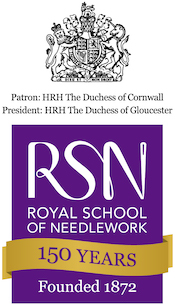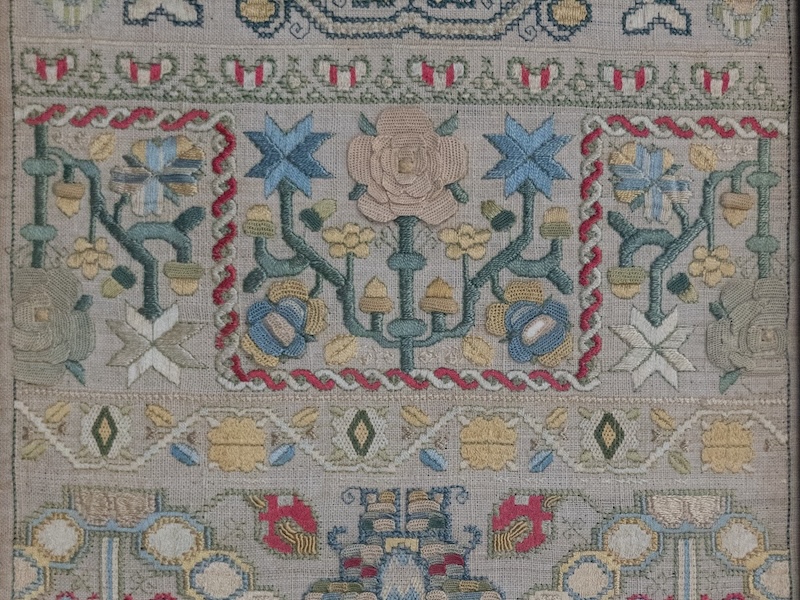
115 New Objects Added
January 2025
We are thrilled to announce that 115 new objects have been added to the RSN Collection website.
This includes a new discovery within the Collection — a sampler made in Barbados in the 18th century, one of only three samplers known to have been made on the island at that time, the earliest known Barbadian sampler.
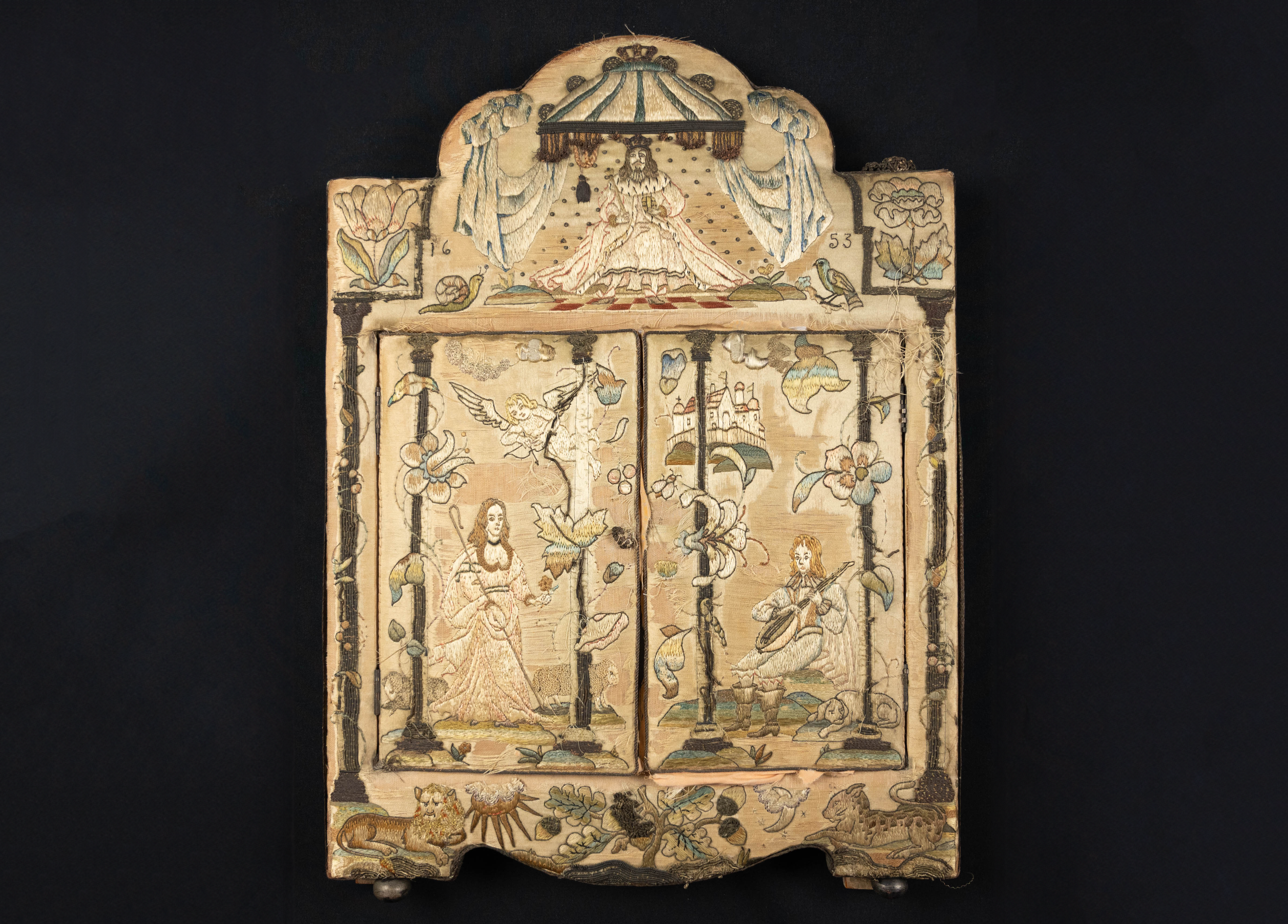
The First 100 Objects
Access to the RSN Collection and Archive is currently limited but an exciting project has begun to make the treasures of the RSN accessible to a wider audience online.
We are delighted that the first 100 objects, which represent the breadth and depth of our holdings, can now be viewed through our online collections portal.
Click below to discover beautiful and varied textiles, from 7th century Coptic weaving to an RSN sampler made for Queen Elizabeth II’s Robe of Estate.
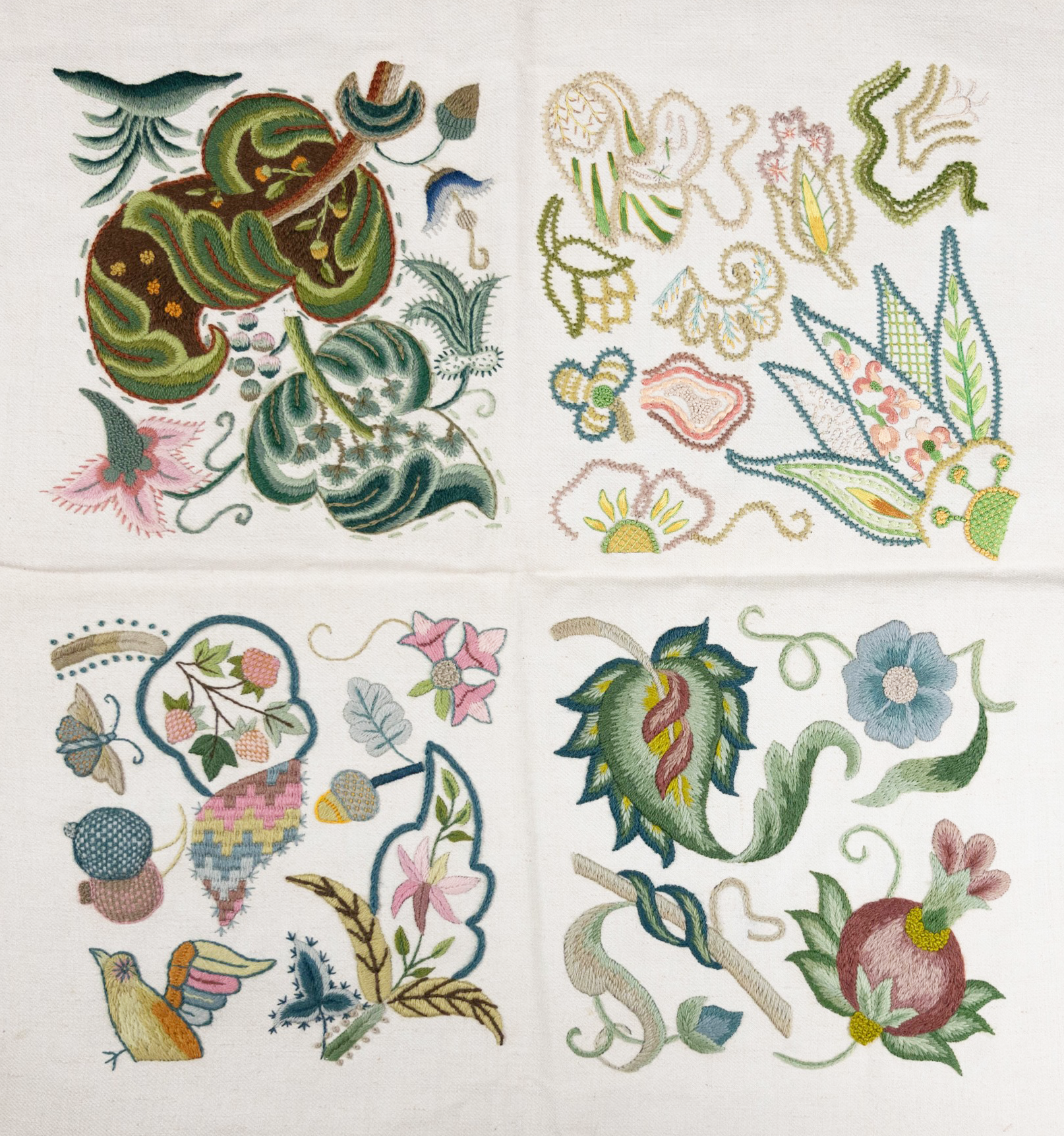
The RSN Collection
The RSN’s Collection includes intricate hand embroidered works, as well as a range of non-embroidered costume and textiles, from the 7th to the 21st century.
In 1875 the School’s Art Committee (Sir Frederic Leighton, Val Prinsep and G.F Bodley) suggested that old works of good design be collected and made available to inform the design work of the school.
Nearly 150 years later the Collection has been added to by donations from all over the world and continues to provide inspiration for the Royal School of Needlework’s Studio and students.
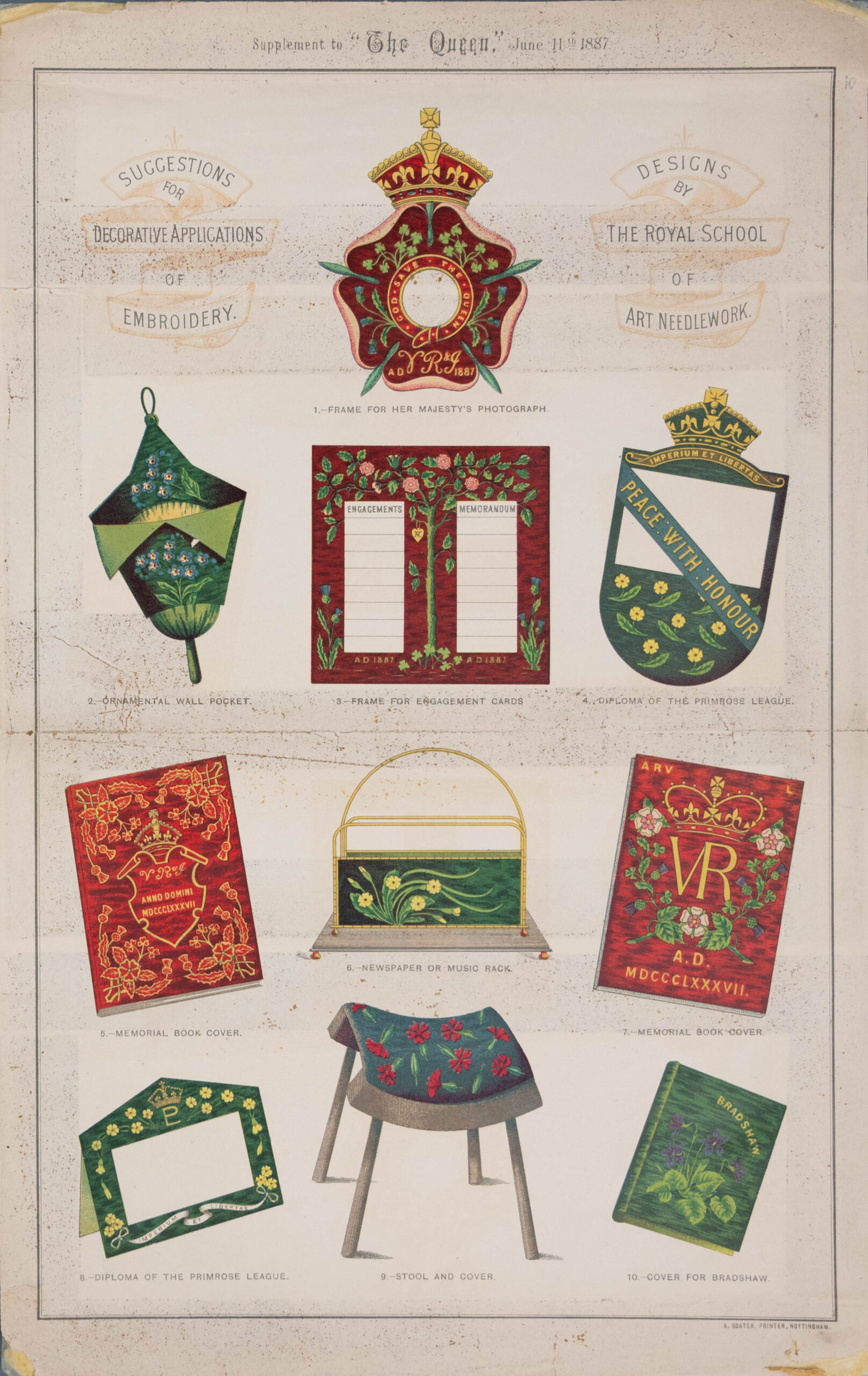
The RSN Archive
The Archive of the RSN contains the output and records of the ‘paint-room’ at the Royal School of Needlework. This collection provides a unique record of needlework design over the last 150 years. Early works were also commissioned from some of the leading figures in the Arts and Crafts and Aesthetic Movements, some of which remain in the collection.
A design by artist and illustrator Walter Crane for the 1876 Philadelphia Centennial Exposition is among the first 100 objects we have digitised, whilst archival papers document the RSN’s leading role in the development of art embroidery in the UK and the US, as well as its work for state occasions and the royal family.
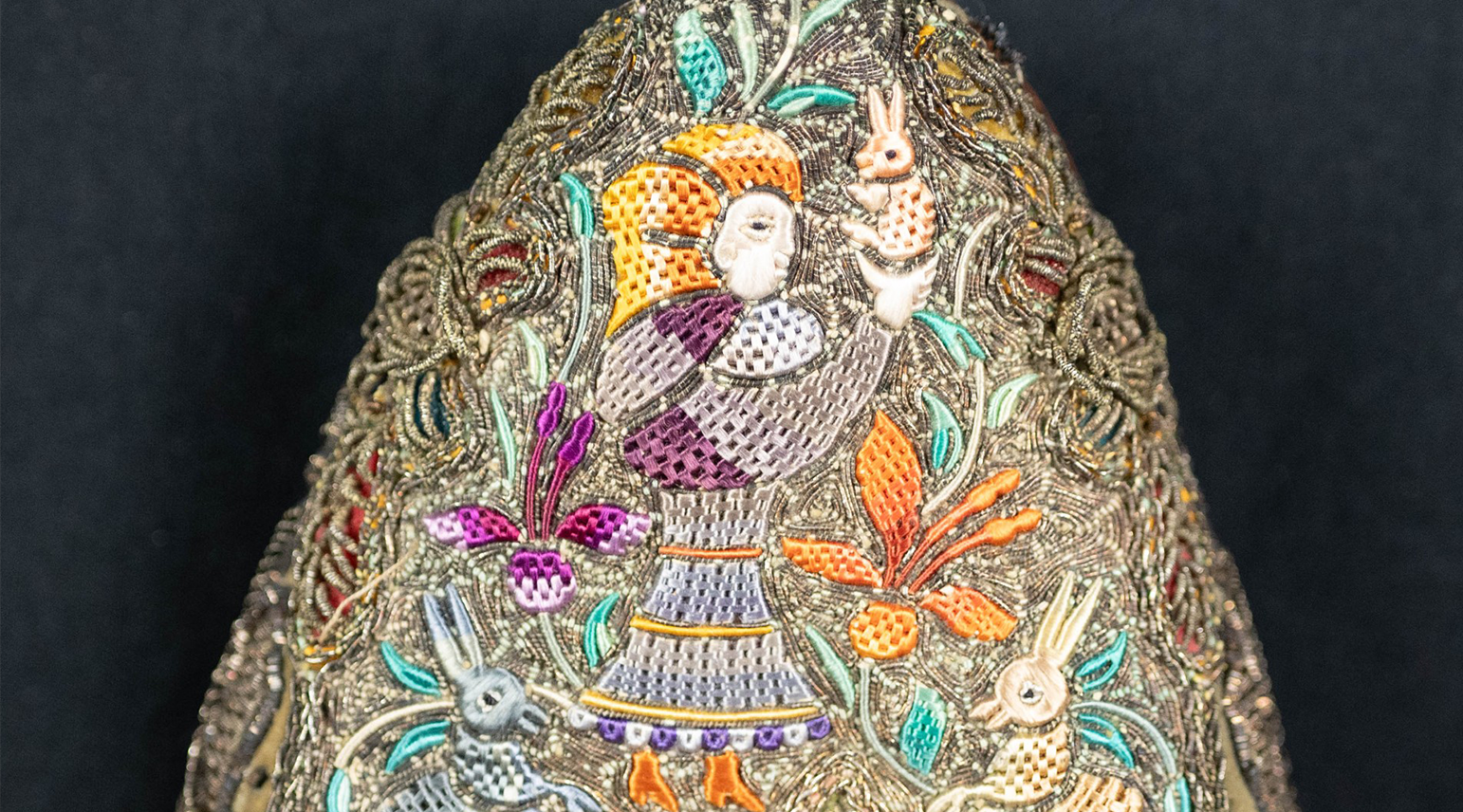
Collections Blog
Accompanying the new collections website is a blog with articles that provide further information about specific items within the RSN Collection and Archive. New articles will be added as we continue to catalogue our holdings.
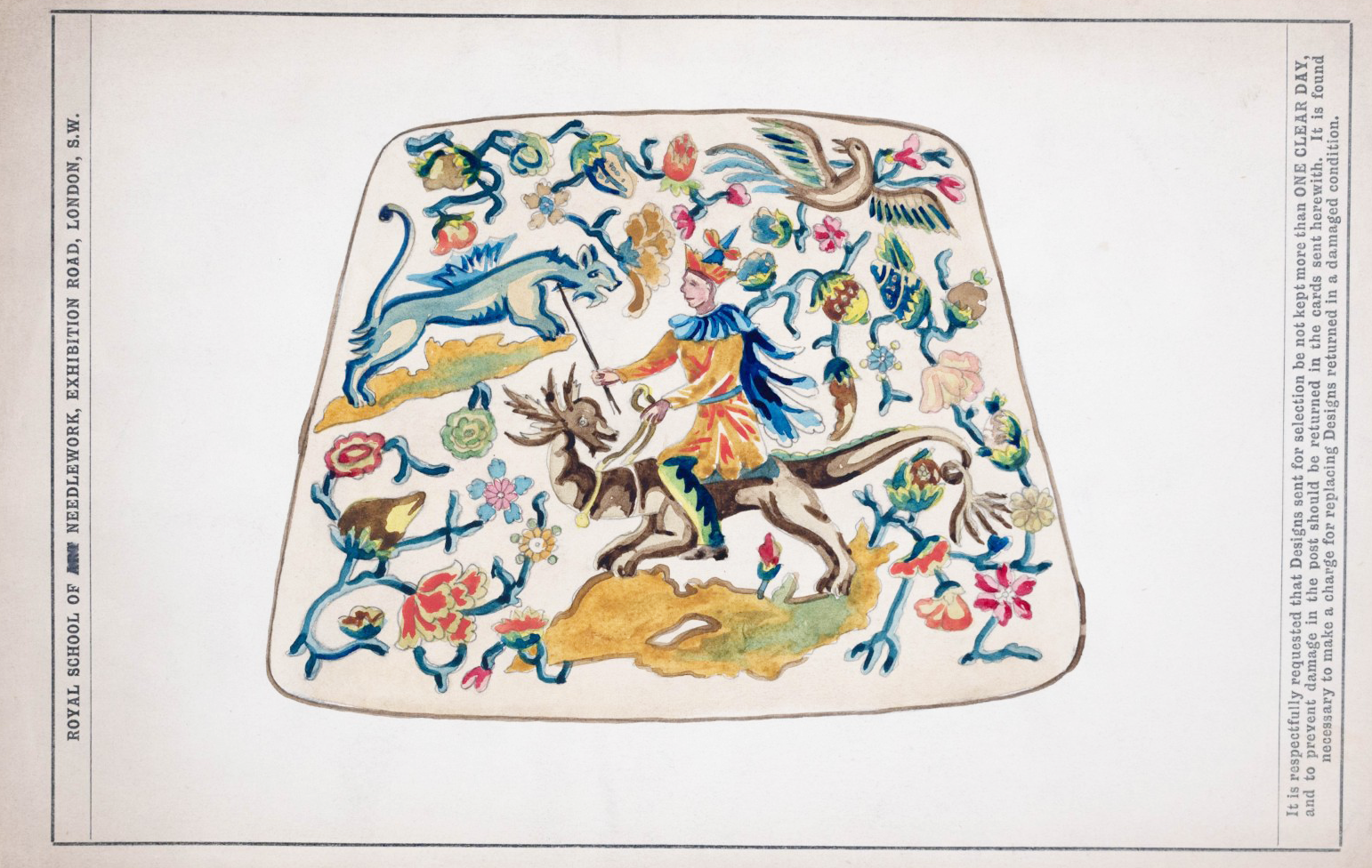
How can you help?
We want to be able to share the RSN collections with everyone who has a passion for embroidery, as well as inspire those who don’t yet know the history of embroidery. We estimate the Collection contains more than 10,000 items and the Archive several thousand more. We are fundraising to continue cataloguing these into an online repository for everyone to be able to enjoy.
If you are interested in supporting our work further, please visit our new exhibition, ‘Tales of Textiles: The RSN Collection in Focus, inspired by the many objects from the RSN Collection which feature on our recently launched digital platform.
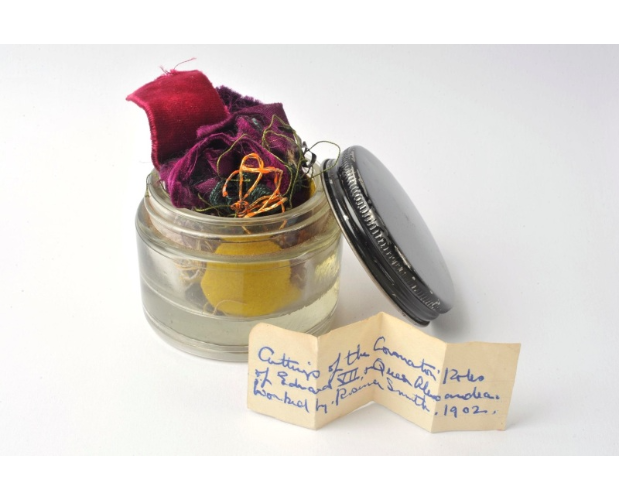
Donate items to the RSN Collection and Archive
We accept donated items of embroidery, fabric, haberdashery, and embroidery tools.
